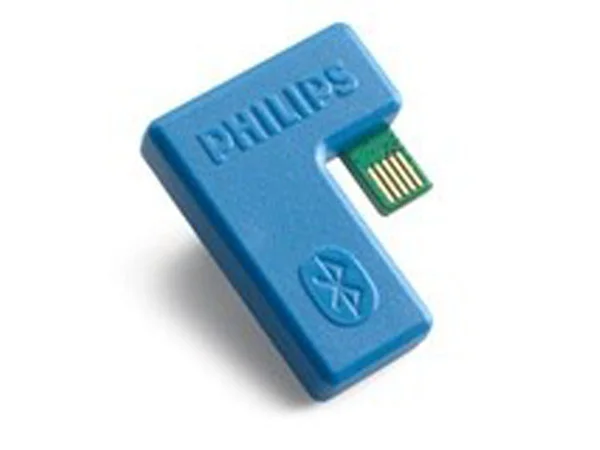 Image 1 of 1
Image 1 of 1


Philips HeartStart FR3 Bluetooth Transceiver Module
The Bluetooth Transceiver Module in a medical device typically serves the purpose of enabling wireless communication and data transfer between the medical equipment and external devices, such as smartphones, tablets, or central monitoring systems. Here is a general description:
1. Communication Technology:
Bluetooth: The module uses Bluetooth wireless technology to establish a secure and reliable connection with compatible devices. Bluetooth enables data transfer over short distances without the need for physical cables.
2. Compatibility:
Device-Specific: The module is designed to work with specific medical devices, in this case, the Philips HeartStart FR3 Automated External Defibrillator (AED). It ensures seamless communication between the AED and other devices for data sharing and remote monitoring.
3. Data Transfer:
Biometric Data: The Bluetooth module allows the AED to transmit patient biometric data, event logs, and other critical information to external devices. This data can be essential for healthcare providers to assess the patient's condition or to maintain records.
4. Remote Monitoring:
Central Monitoring Systems: In many medical settings, data collected by the AED, such as ECG (Electrocardiogram) readings and device status, can be remotely monitored in real-time. This enables healthcare providers to respond to emergencies more effectively.
5. Event Logging:
Data Storage: The module may be involved in storing event data and logs, making it easier for healthcare professionals to access and review past incidents and patient care.
The Bluetooth Transceiver Module in a medical device typically serves the purpose of enabling wireless communication and data transfer between the medical equipment and external devices, such as smartphones, tablets, or central monitoring systems. Here is a general description:
1. Communication Technology:
Bluetooth: The module uses Bluetooth wireless technology to establish a secure and reliable connection with compatible devices. Bluetooth enables data transfer over short distances without the need for physical cables.
2. Compatibility:
Device-Specific: The module is designed to work with specific medical devices, in this case, the Philips HeartStart FR3 Automated External Defibrillator (AED). It ensures seamless communication between the AED and other devices for data sharing and remote monitoring.
3. Data Transfer:
Biometric Data: The Bluetooth module allows the AED to transmit patient biometric data, event logs, and other critical information to external devices. This data can be essential for healthcare providers to assess the patient's condition or to maintain records.
4. Remote Monitoring:
Central Monitoring Systems: In many medical settings, data collected by the AED, such as ECG (Electrocardiogram) readings and device status, can be remotely monitored in real-time. This enables healthcare providers to respond to emergencies more effectively.
5. Event Logging:
Data Storage: The module may be involved in storing event data and logs, making it easier for healthcare professionals to access and review past incidents and patient care.
